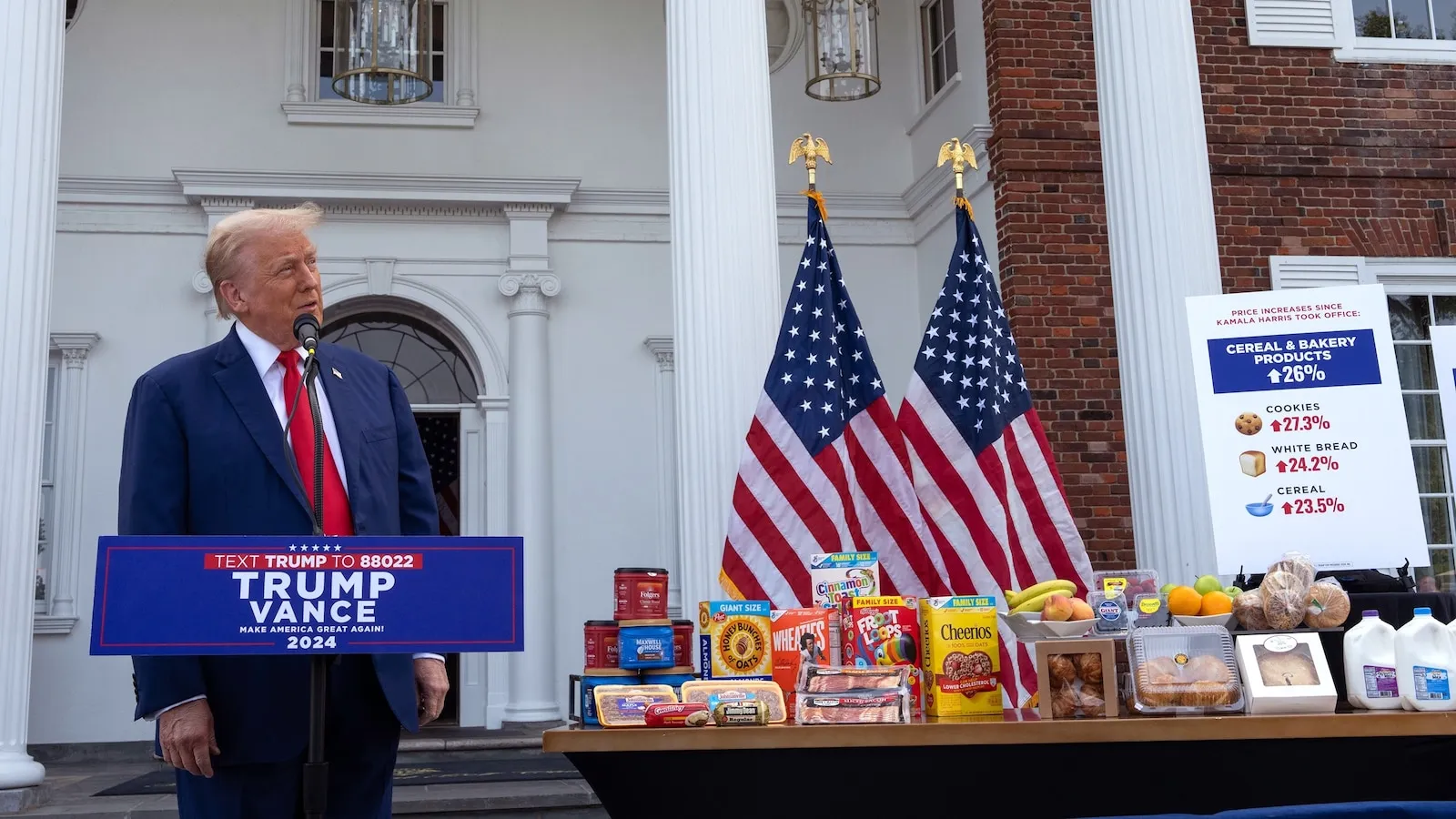Trump’s Grocery Price Dilemma: Can He Deliver Relief to Struggling Americans?
In the heated landscape of the 2024 election cycle, grocery prices have emerged as a critical battleground issue that could make or break voter sentiment. Former President Donald Trump has positioned himself as a potential solution to the economic challenges facing American families, promising relief from rising food costs that have squeezed household budgets in recent years.
The economic pressure on American consumers has been mounting, with grocery prices experiencing a significant spike since 2020. Trump acknowledges the complexity of the challenge, recently stating that bringing down food costs will be “very hard” while simultaneously offering hope to frustrated voters.
The Current Economic Landscape
Recent data reveals a stark economic reality:
1. Grocery prices have increased by over 25% since President Biden took office
2. Food inflation peaked at more than 10% in 2022
3. Prices have since moderated to around 2% annual growth
Trump’s economic strategy centers on several key approaches:
– Reducing energy costs
– Improving supply chain management
– Challenging current trade policies
Complex Factors Driving Prices
The former president has pointed to multiple culprits for high grocery prices. Energy costs, supply chain disruptions, and market concentration among major food corporations are primary targets of his critique. Howard Lutnick, tapped as potential commerce secretary, is expected to play a crucial role in developing economic strategies.
“We will make groceries affordable again,” Trump told supporters during a recent campaign rally.
Economic Challenges and Proposed Solutions
Experts remain divided on the feasibility of Trump’s promises. While he emphasizes reducing energy costs and improving supply chain efficiency, economists warn that:
– Proposed tariffs could potentially increase consumer prices
– Labor shortages in agriculture might impact food production
– Market concentration among major retailers complicates price reduction efforts
Voter Sentiment and Political Implications
The grocery price issue has become a powerful political weapon. Voter frustration is palpable, with many Americans feeling the pinch of rising food costs. Trump’s campaign has strategically positioned this economic challenge as a key differentiator from the current administration.
Environmental and Economic Trade-offs
Interestingly, Trump’s proposed solutions, such as increased oil production to lower food transportation costs, come with potential environmental consequences. Climate change experts caution that such strategies might have long-term ecological impacts.
The Road Ahead
While Trump promises quick and dramatic relief, economic analysts suggest a more nuanced approach will be necessary. The complexity of global supply chains, agricultural production, and energy markets means there are no simple solutions.
Conclusion
As the 2024 election approaches, grocery prices remain a critical issue for American voters. Trump’s ability to deliver on his promises could significantly influence the electoral outcome, making this economic challenge a high-stakes political battleground.
Key Takeaways:
– Grocery prices have been a major economic concern
– Trump promises relief but acknowledges challenges
– Voters are watching closely for potential solutions
Disclaimer: Economic projections and campaign promises are subject to change and should be evaluated critically.






Leave a Comment